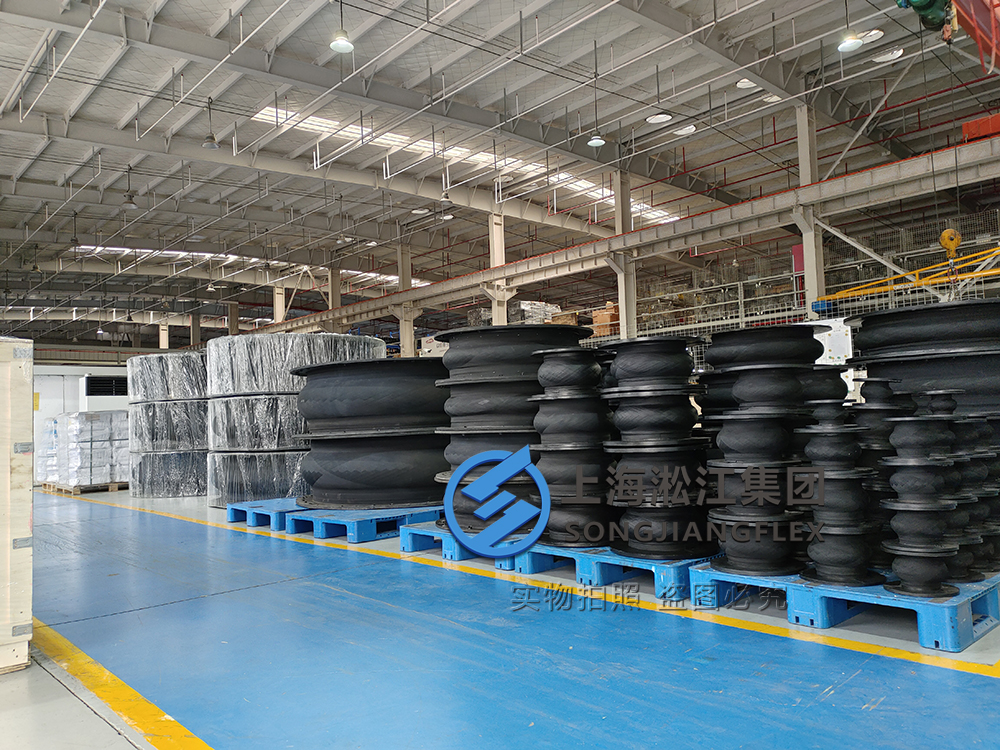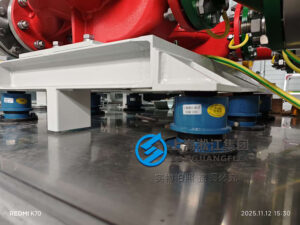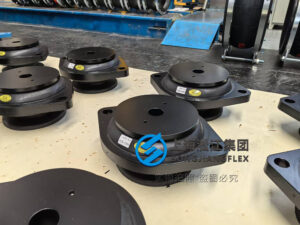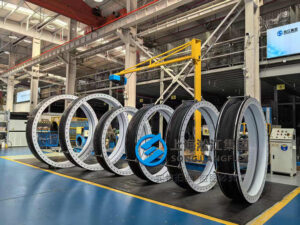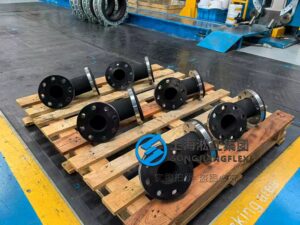Flue Gas Desulfurization (FGD) Full-faced Rubber Expansion Joint for Power Plant: Why Is It Essential?
Leading Paragraph
In power plants, flue gas desulfurization (FGD) systems play a vital role in removing sulfur dioxide from exhaust gases. However, these systems face challenges such as vibration, thermal expansion, and pressure changes. A high-quality rubber expansion joint is crucial to prevent damage and ensure the stability of the entire system.
Snippets Paragraph
A full-faced rubber expansion joint in FGD systems effectively absorbs vibrations, thermal expansion, and mechanical stresses, offering enhanced flexibility and durability. This makes it a critical component for power plant operations, especially in environments dealing with high temperatures and pressures.
Transition Paragraph
Continue reading to understand why rubber expansion joints are essential for FGD systems and how to select the right one for your needs.
What is a Flue Gas Desulfurization (FGD) System?
A flue gas desulfurization (FGD) system is designed to remove sulfur dioxide (SO2) from exhaust gases produced during combustion in power plants.
FGD systems use alkaline substances, such as limestone, to chemically neutralize sulfur dioxide, converting it into a solid byproduct that can be safely disposed of. This process helps power plants comply with environmental regulations and minimizes air pollution.
The process works by passing flue gases through a slurry of limestone or other alkaline materials. The sulfur dioxide reacts with the slurry, forming calcium sulfate, which is then removed. This process ensures that the sulfur content in the gas is reduced significantly before it is released into the atmosphere, making the FGD system a critical component in maintaining air quality and compliance with environmental laws.
Why Are Rubber Expansion Joints Crucial in FGD Systems?
In FGD systems, rubber expansion joints are essential to accommodate thermal expansion, absorb vibrations, and provide flexibility within the piping system.
These expansion joints help prevent stress on the pipes and equipment caused by thermal changes, ensuring that the system remains intact and continues to operate smoothly.
Rubber expansion joints offer flexibility, allowing the system to adjust to varying temperatures and vibrations. This reduces the risk of mechanical failure and extends the lifespan of the FGD system. Moreover, rubber expansion joints can effectively seal against gas leaks and prevent contamination, which is crucial in sensitive environments like power plants.
What is a Full-faced Rubber Expansion Joint?
A full-faced rubber expansion joint is a specialized type of expansion joint designed for use in high-pressure and high-temperature applications, offering superior sealing performance.
The full-faced design of these rubber joints ensures a tight seal between the pipes, preventing leaks and ensuring that gases like sulfur dioxide are effectively contained during the desulfurization process.
Full-faced rubber expansion joints are particularly useful in FGD systems due to their enhanced sealing capabilities and ability to withstand high-pressure gas flow. Unlike standard rubber joints, the full-faced design covers the entire pipe surface, providing a more uniform seal and better resistance to mechanical stresses, vibrations, and temperature changes.
How to Choose the Right Full-faced Rubber Expansion Joint for FGD?
Selecting the right full-faced rubber expansion joint involves considering several factors, including material properties, dimensions, and the system’s operating conditions.
Factors such as pressure, temperature, chemical exposure, and vibration levels must all be considered to ensure the rubber expansion joint’s longevity and performance in the FGD system.
When choosing a rubber expansion joint, it’s essential to assess the specific requirements of your FGD system. For example, if the system operates at high temperatures, a heat-resistant rubber such as EPDM (Ethylene Propylene Diene Monomer) may be required. Similarly, if chemical exposure is a concern, selecting a rubber with resistance to corrosive gases is vital. Manufacturers typically offer rubber expansion joints in various sizes and pressure ratings to suit different system requirements.
Benefits of Using Full-faced Rubber Expansion Joints in Power Plant FGD Systems
Full-faced rubber expansion joints offer multiple benefits in power plant FGD systems, including vibration damping, pressure absorption, and extended equipment life.
Using these joints minimizes wear and tear on the system, reduces maintenance needs, and ensures smooth operation by providing flexibility in pipe movement and minimizing mechanical stress.
In power plant environments, where vibrations from heavy machinery and fluctuating temperatures are constant, full-faced rubber expansion joints act as a buffer, absorbing vibrations and thermal movements. This function reduces the risk of damage to critical components such as piping, fans, and turbines. The improved durability and lower maintenance costs make these joints a cost-effective solution for long-term operation.
What is a Rubber Expansion Joint?
A rubber expansion joint is a flexible connector used to absorb thermal expansion, vibrations, and mechanical displacement in piping systems.
Rubber expansion joints are used in a variety of applications, including concrete, pipe, and bridge systems, providing flexibility and durability to reduce strain on the infrastructure.
These joints are made from various rubber materials such as EPDM, neoprene, and chloroprene, depending on the specific needs of the system. They allow for the absorption of movement due to thermal expansion and vibrations, which helps prevent damage to the pipes and equipment. Rubber expansion joints are used in a wide range of industries, including chemical processing, water treatment, HVAC, and power generation.
What is the Difference Between Metal Expansion Joint and Rubber Expansion Joint?
Metal and rubber expansion joints serve similar functions but differ significantly in their construction and application areas.
Metal expansion joints are suited for high-pressure, high-temperature applications, while rubber expansion joints are better for systems with lower pressures and higher flexibility requirements.
Metal expansion joints are typically used in environments where extremely high temperatures and pressures are present. On the other hand, rubber expansion joints are more flexible and easier to install, making them ideal for systems that require movement absorption due to temperature changes and vibrations. Rubber joints also provide better resistance to corrosion and are often more cost-effective than metal options.
What is the Purpose of the Expansion Joint?
The primary purpose of an expansion joint is to absorb the stresses caused by temperature fluctuations, mechanical movement, and vibration in piping systems.
Expansion joints prevent damage to pipes and equipment by allowing for thermal expansion and movement, reducing the risk of leaks and mechanical failure.
In industrial settings, expansion joints are essential for preventing pipe rupture or structural damage caused by temperature-induced expansion or mechanical forces. They allow systems to remain functional under dynamic conditions, whether in power plants, bridges, or water treatment facilities.
How Long Do Rubber Expansion Joints Last?
The lifespan of rubber expansion joints typically ranges from 10 to 20 years, depending on the operating conditions and maintenance practices.
Regular inspections and the use of high-quality rubber materials can extend the life of the expansion joints, even in harsh environments like power plants.
Several factors influence the longevity of rubber expansion joints, including exposure to extreme temperatures, chemicals, and mechanical stress. Using high-quality materials like EPDM or neoprene, and ensuring proper installation and maintenance, can significantly increase the lifespan of the joints.
Should You Seal Expansion Joints?
Sealing expansion joints can enhance their performance by preventing leaks and providing an additional layer of protection against corrosive substances.
In systems where gas containment and chemical resistance are critical, sealing expansion joints ensures that no harmful substances escape, maintaining system integrity.
Sealing expansion joints involves applying a gasket or sealant to the joint’s edges. This process is particularly useful in systems dealing with hazardous gases or fluids, where leakage could cause safety issues or environmental contamination.
How Long Does Rubber Resurfacing Last?
Rubber resurfacing involves applying a new layer of rubber to extend the joint’s life and maintain its performance.
The resurfacing of rubber joints typically lasts 3 to 5 years, depending on environmental conditions and usage intensity.
Resurfacing is an essential maintenance practice that helps to restore the rubber expansion joint’s functionality. During resurfacing, worn-out rubber layers are replaced with fresh material, ensuring that the joint continues to perform effectively in absorbing vibrations and thermal movements.
How to Find Rubber Expansion Joint Manufacturers and Price?
Finding the right rubber expansion joint manufacturer is crucial for ensuring quality and competitive pricing.
Looking at rubber expansion joint catalogs and comparing prices from reputable manufacturers helps in making an informed decision based on budget and requirements.
Manufacturers offer a wide range of rubber expansion joints, and prices vary based on materials, dimensions, and customizations. It’s important to choose a supplier that offers high-quality products along with clear pricing and certifications to ensure reliability and compliance.
Summary
In summary, using the right full-faced rubber expansion joint for your FGD system ensures that it operates efficiently, withstands high pressure, and lasts longer, making it a critical investment for power plants.

